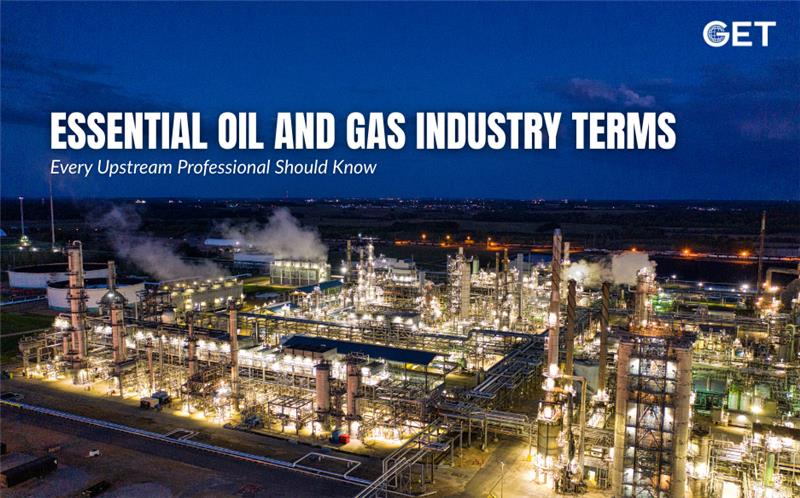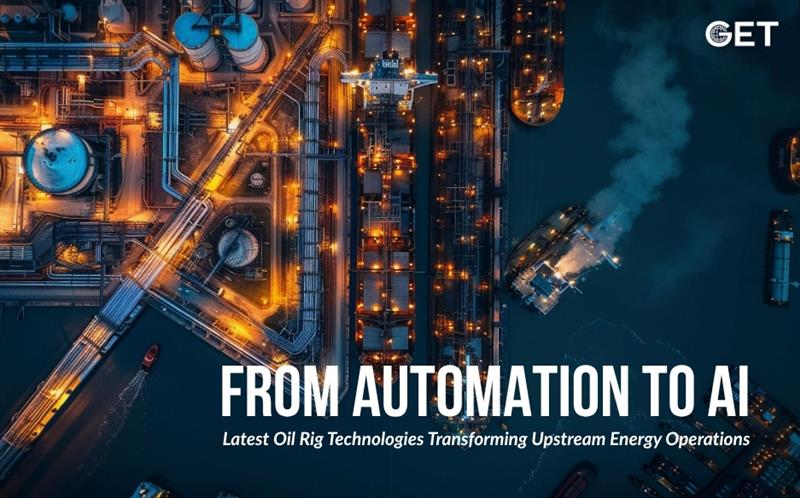
Did you know that how well reservoir engineering is done decides if your upstream oil and gas projects will make money? Studies show that getting a full picture of the reservoir can boost production efficiency by as much as 30%. This makes it a key piece of successful hydrocarbon extraction.
Working in the oil and gas field means you need to grasp how reservoir engineering fits into every stage of operations. Reservoir engineers play a crucial role in coming up with new methods and technologies to get hydrocarbons out , and at a low cost. Whether you’re thinking about joining the oil and gas industry or already dealing with the challenges in upstream, midstream, or downstream operations, what reservoir engineers bring to the table has a huge effect on your project’s results. This guide explains why learning reservoir engineering is key to your progress. It also covers the methods used to manage reservoirs well and shows how these methods affect production. With over 60% of the world’s oil fields depending on precise reservoir studies to improve recovery processes, understanding these concepts might be the line between an average-performing site and one that makes huge profits.
Reservoir engineers play a vital part in upstream oil and gas work. They shape how successful your exploration and production efforts turn out . These experts use science to study how fluids move within porous rocks during production to ensure the best possible economic output. Reservoir engineers take geological and petrophysical data turning it into models that help with important decisions. Their role becomes especially important when exploring new reservoirs where they collaborate with geologists and drilling teams to identify and understand possible reservoir sites. The Bureau of Labor Statistics shows that petroleum engineering jobs are expected to grow by 8% from 2020 to 2031 showing the steady need for professionals in this field.
These specialists work closely with teams from different fields to connect detailed technical insights with practical use. Reservoir engineers study geological, geophysical, geomechanical, drilling, completion, and well data to build smart and cost-effective plans during field development planning.
Their evaluations lead to vital production forecasts, which have an influence on key investment choices. They track reservoir performance to help adjust operations as conditions shift. This approach supports steady profits over time.
Reservoir engineers also take on a major role in carbon capture projects. They aim to lower greenhouse gas levels while extracting the most hydrocarbons possible. Balancing economic goals with environmental needs makes them essential in the modern oil and gas sector. If you aim to optimize upstream operations, reservoir engineers offer the expertise to turn geological resources into profitable production outcomes.
The technological landscape of reservoir engineering has evolved dramatically, with several cutting-edge techniques now driving success in the upstream oil and gas sector. These advanced methodologies help you maximize recovery and optimize production throughout a reservoir’s lifecycle.
stands out as a comprehensive approach that employs sophisticated well and interwell testing methods throughout field life. This technique continuously updates the geological model based on interwell connectivity data, creating a dynamic numerical model that guides remedial actions including strategic infill well placement. For effective implementation, ARM requires a multidisciplinary team of experts covering all aspects of reservoir geology and engineering.Advanced Reservoir Monitoring (ARM)
Meanwhile, has fundamentally transformed reservoir engineering decision-making processes. By collecting, cleansing, and modeling data, engineers can discover valuable insights that improve reservoir characterization and performance forecasting. This approach is especially valuable for unconventional assets where traditional physics-based methods face significant challenges due to complex geological structures.
Data analytics has completely changed how engineers make decisions in reservoir engineering. Engineers gather clean, and model data to gain insights that help them understand reservoirs better and predict how they will perform. This method becomes even more important to address challenges in unconventional assets where complex geology makes traditional physics-based techniques harder to use data analytics.
Reservoir simulation has seen big improvements too. Advanced software now predicts fluid movement, pressure patterns, and production trends with impressive accuracy. These tools rely on advanced algorithms and real-time data to improve decisions about well placement and managing resources more over time.
Perhaps most notably, machine learning algorithms are revolutionizing how production data is interpreted. These tools analyze patterns in reservoir behavior, predict equipment failure, and even suggest optimal enhanced oil recovery methods for specific conditions. Studies indicate that machine learning workflows have reduced forecasting error compared to classical decline analysis while eliminating subjective curve fitting.
History matching—the process of calibrating simulation models with observed data—has also evolved through techniques like Bayesian Markov chain Monte Carlo and long-short-term memory networks. These approaches provide more efficient frameworks for accounting for uncertainties during the matching process, ultimately leading to more accurate production forecasts.
Through these advanced techniques, you can significantly enhance recovery factors and maximize the value of your upstream assets.
The practical application of reservoir engineering techniques has delivered remarkable results across the upstream oil and gas industry. Field implementations demonstrate how these approaches translate directly to your bottom line. For instance, reservoir modeling and production solutions have helped , creating significant economic advantages for operators facing budget constraints reduce exploration costs by up to 20%.
In practice, reservoir engineering drives performance improvements through multiple pathways. Effective reservoir simulation enables you to:
The Prudhoe Bay field in Alaska highlights how fractional flow modeling improved waterflooding operations. This method boosted oil output and cut down expenses related to water injection. In the North Sea, using fractional flow analysis helped make gas injection more effective, which led to better recovery rates and stronger operational performance.
Using advanced reservoir characterization has also become essential to spot drilling hazards. Companies now combine seismic imaging with real-time data tools to steer clear of unstable formations and high-pressure areas that could lead to blowouts. This setup lets teams make split-second decisions while drilling and adjust settings to avoid risks. Digital tools keep changing how the economics of reservoir engineering works. One company improved reporting speeds by 15% and cut down admin hours by half when using integrated development production systems. Real-time data syncing has also allowed companies to update geological models on the fly, which shifts how they handle subsurface exploration.
As machine learning and AI become part of reservoir engineering, operations see better predictions fine-tuned production methods, and clearer reserve estimates. These changes boost asset performance and increase profits across the upstream oil and gas industry.
This look into reservoir engineering shows how it supports profitable upstream oil and gas work. Using reservoir engineering principles has a big effect on profits. Detailed characterization methods boost production by about 30 percent and lower exploration expenses by up to 20 percent.
Reservoir engineers do more than just crunch numbers. They turn hard-to-understand geological data into practical plans to shape investment choices throughout a project’s stages. Their knowledge stands out when tackling tough formations or using advanced recovery techniques. Modern methods like ARM, machine learning algorithms, and data analytics now bring a major shift to traditional practices. These advanced tools help teams make choices based on data instead of relying on old-school techniques. This approach boosts recovery rates while keeping operational risks lower. Real-world examples from Prudhoe Bay and the North Sea prove these advancements work and are not just ideas on paper.
As technology keeps advancing, reservoir engineering will change with it. Staying updated on these changes is key to staying ahead in the upstream industry. Whether you handle aging fields or step into new territories, having strong reservoir engineering knowledge will decide how much value you can pull from your hydrocarbon resources. This guide’s evidence leads to one main takeaway: great reservoir engineering is key to successful upstream operations. Businesses that focus on this area set themselves up to optimize production, cut expenses, and achieve better financial results in a challenging and ever-changing industry.
Read Also- How to Start a Career in Renewable Energy in the UAE

By Get global | December 5, 2025
Turkey’s ambitions in the energy sector have taken a significant step forward as Turkish Petroleum (TPAO) ramps up drilling at its latest Black Sea discovery. The find is considered one of the most promising additions to the region’s portfolio, reshaping the conversation around Turkish gas exploration, self-sufficiency, and the future […]

By Get global | November 27, 2025
The upstream oil and gas industry is thrilling, quick-moving, and rich with opportunities—but let’s face it, it also has a lot of technical language. If you are a newcomer to the industry, changing jobs, or just wanting to enhance your knowledge about the industry, mastering the right terms can facilitate […]

By Get global | November 24, 2025

By Get global | November 17, 2025
Anyone who has worked in the UAE energy sector will tell you the same thing. The industry here keeps moving. Every year brings new drilling activity, stronger digital adoption, and a clearer shift toward cleaner and more efficient operations. Because of this, companies are looking for a different mix of […]

By Get global | November 13, 2025
The upstream oil and gas business often conjures images of vast platforms, roaring drills, and crews battling the elements. What is less obvious to the outsider is how deeply technology has become woven into that fabric — not just innovations stuck onto rigs, but full-scale transformations that are reshaping how […]